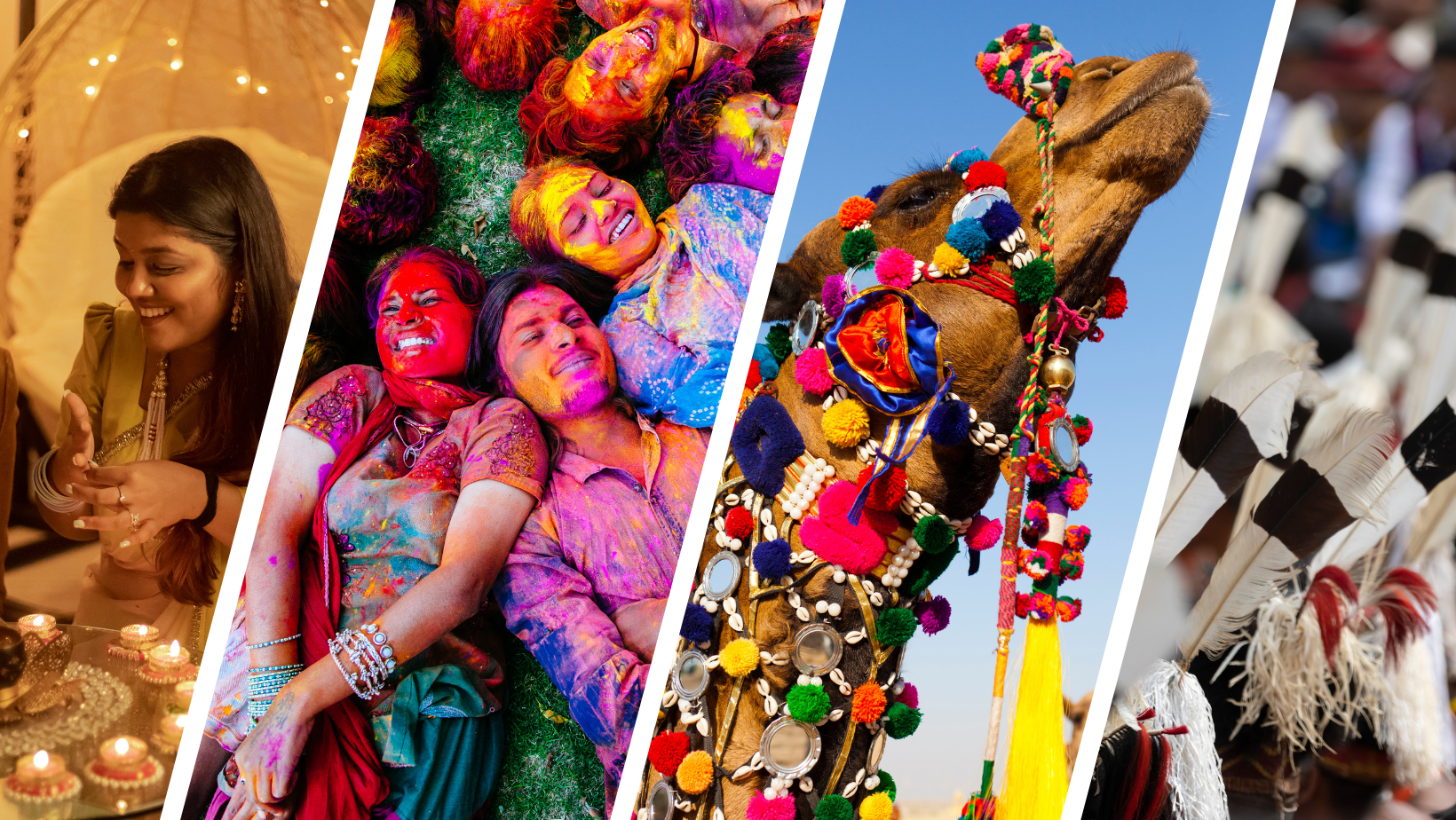
Festivals of India
India is a vibrant, diverse and colourful country known for its rich cultural tapestry, and its festivals are a testament to this cultural wealth. Throughout the year, the festivals of India make the destination come alive with displays that reflect the country’s deep-rooted traditions, religious diversity, and celebratory spirit. Visiting India for one of its amazing festivals can be a once in a lifetime experience and a truly authentic one, here are some of the festivals of India you might like to include in your visit.
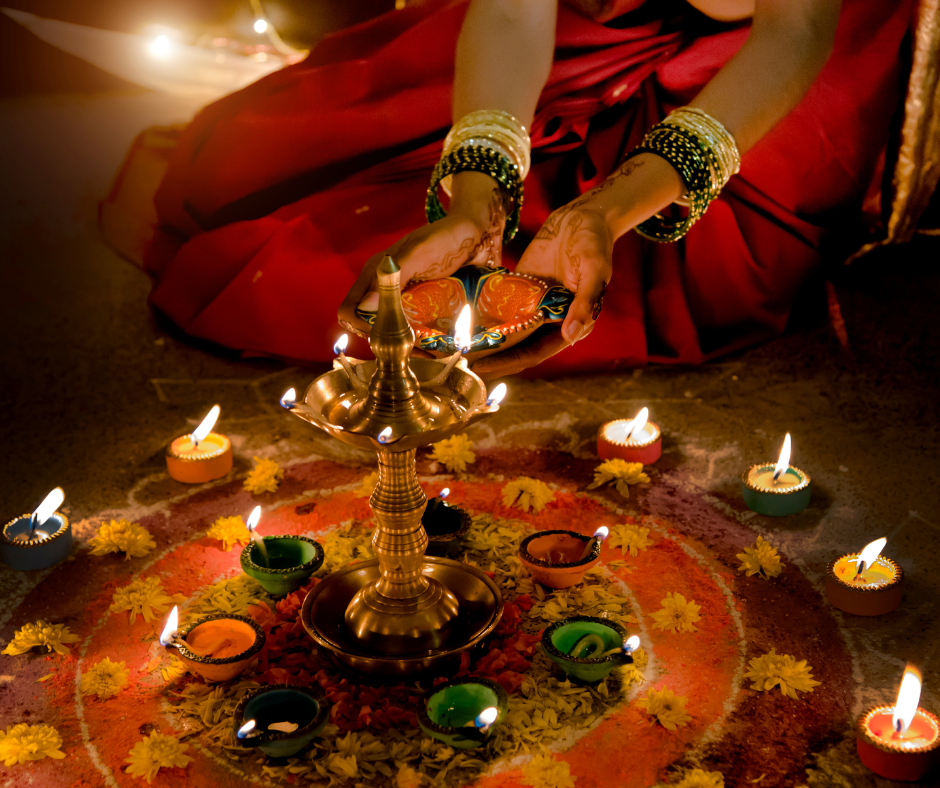
Diwali
Diwali, also known as Deepavali, is one of the most vibrant and significant festivals of India. It holds immense cultural and religious importance, uniting people from diverse backgrounds in a spectacle of lights, joy, and festivities. Diwali is a captivating and harmonious festival that highlights the rich cultural heritage and religious diversity of India. As the festival of lights, it illuminates hearts, spreads happiness, and strengthens the bonds of love and togetherness among people. Diwali serves as a reminder that goodness will always triumph over darkness, filling everyone’s life with hope and positivity. It is an experience like no other, and anyone who witnesses the splendour of Diwali will be forever touched by its magic.
Diwali is one of the multi-faceted festivals of India with a wide range of activities and traditions associated with it. Here are some of the activities that are typically part of Diwali celebrations:
Lighting Diyas and Candles: The most iconic aspect of Diwali is the illumination of countless oil lamps (diyas) and candles, both inside and outside homes. This symbolizes the triumph of light over darkness and the dispelling of ignorance.
Decorating Homes: People clean and decorate their homes in the weeks leading up to Diwali. Rangoli, colourful patterns made with coloured powders, rice, or flower petals, are created at the entrances to homes to welcome guests.
Exchanging Gifts: The exchange of gifts is a common Diwali tradition. Family and friends exchange sweets, dry fruits, and presents as a token of love and affection.
Fireworks and Firecrackers: Diwali is known for its spectacular fireworks displays. Families often gather to watch and set off fireworks to celebrate the festival.
Puja (Prayers): Religious rituals are an integral part of Diwali. Families perform puja (prayers) to seek the blessings of deities, especially Goddess Lakshmi, the goddess of wealth and prosperity.
Feasting: Diwali is a time for delicious food and sweets. Families prepare a variety of traditional dishes and sweets, such as samosas, pakoras, mithai (sweets), and special festive meals.
Visiting Relatives and Friends: Diwali is a time for social gatherings. People visit the homes of relatives and friends to exchange greetings, blessings, and good wishes.
Wearing New Clothes: It is customary to wear new clothes during Diwali to signify a fresh start and the festive spirit.
Gifting to the Needy: Many people engage in acts of charity during Diwali by donating to the less fortunate and helping those in need.
Community Events: In some regions, communities organize cultural programs, fairs, and processions to celebrate Diwali collectively.
Card Games and Gambling: Playing card games and gambling during Diwali is a tradition in some parts of India, as it is believed to bring good luck and prosperity.
Lakshmi Puja: On the main Diwali day, families perform a special puja dedicated to Goddess Lakshmi, often lighting numerous oil lamps and offering prayers for wealth and prosperity.
Dev Deepavali
Dev Deepavali, is a unique and grand festival celebrated in the holy city of Varanasi, India. Falling on the full moon day (Purnima) of the Hindu month of Kartika, it is observed to honour and pay homage to the river Ganges and its divine significance. Dev Deepavali is an extraordinary celebration that showcases the soul of Varanasi, the spiritual capital of India. With its mystical aura, the festival epitomizes the city’s devotion to the river Ganges and its belief in the divine. Witnessing Dev Deepavali is a transformative experience, as it provides a glimpse into the age-old traditions and the spiritual fervour that have been an integral part of Varanasi’s cultural heritage for centuries. This divine celebration continues to inspire and touch the hearts of all those who become part of its sacred embrace.
Celebrating in Varanasi makes Dev Deepavali one of the most spiritual festivals of India. Dev Deepavali is celebrated with great fervour and includes several unique activities and traditions:
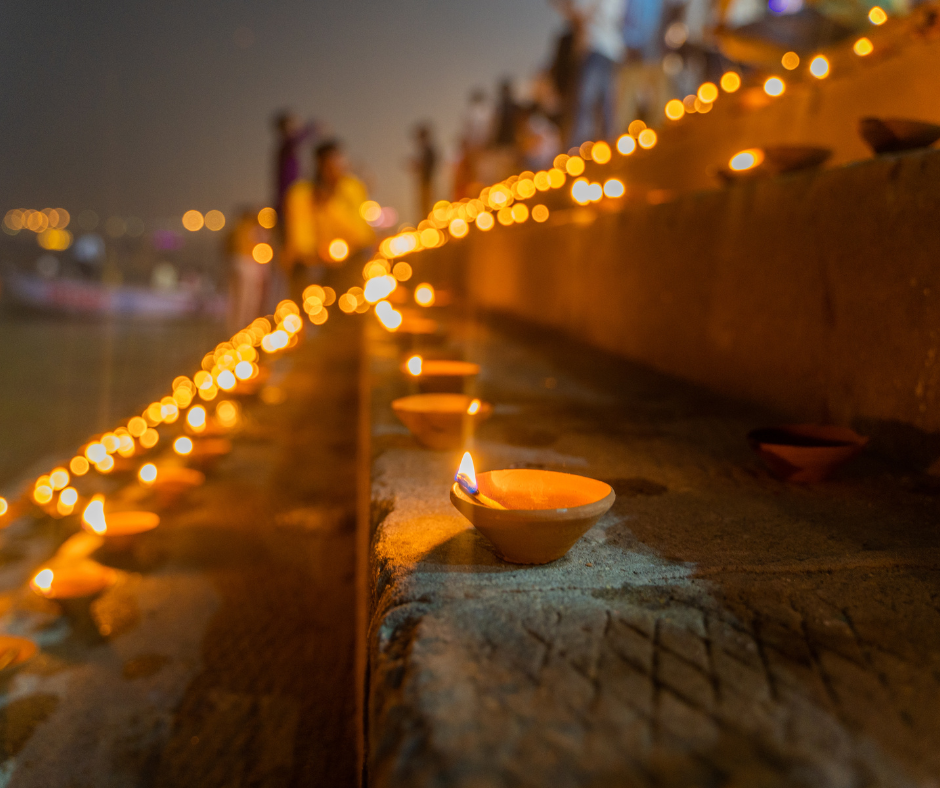
Ghats Illumination: The most iconic aspect of Dev Deepavali in Varanasi is the illumination of the ghats along the banks of the river Ganges. Thousands of oil lamps (diyas) are lit along the ghats, creating a mesmerizing and spiritually charged atmosphere. This grand display of lights is meant to welcome and honour the gods and goddesses.
Ganga Snan (Holy Bath): Devotees and pilgrims flock to the ghats of Varanasi to take a holy dip in the Ganges River during the early hours of Dev Deepavali. This ritual is believed to cleanse one’s sins and purify the soul.
Artistic Performances: Various cultural and artistic performances take place throughout the city, including classical music and dance performances. The ghats become stages for these performances, adding to the festive ambiance.
Processions: Processions featuring idols of deities are carried through the streets of Varanasi. Devotees participate in these processions, singing bhajans (devotional songs) and offering prayers.
Offerings and Puja: Temples in Varanasi are adorned with flowers and decorations. Devotees visit these temples to offer prayers and seek blessings from the deities.
Boat Rides: Boat rides along the Ganges are a popular activity during Dev Deepavali. These rides offer breathtaking views of the illuminated ghats and the rituals taking place along the riverbanks.
Fireworks: Just like in the main Diwali celebration, fireworks and firecrackers light up the night sky during Dev Deepavali, adding to the festive spirit.
Community Gatherings: Families and communities come together to celebrate Dev Deepavali by lighting lamps, sharing meals, and exchanging greetings.
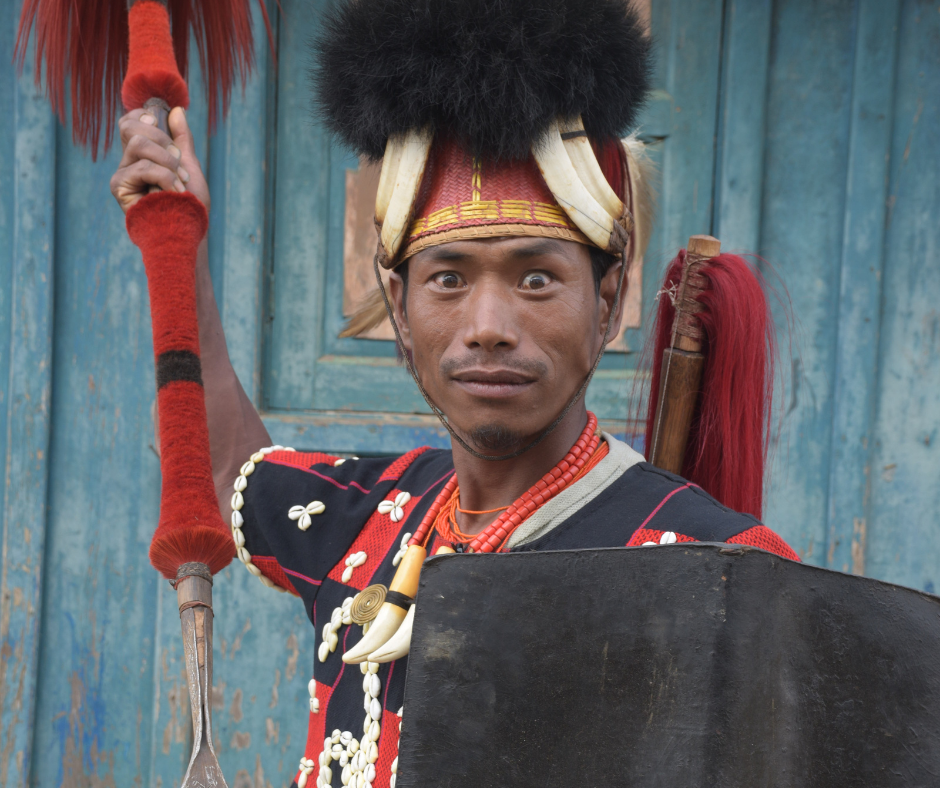
Hornbill Festival
The Hornbill Festival in India is a tribal celebration held annually in the northeastern state of Nagaland. One of the most different and unexpected of the festivals of India, it usually taking place from December 1st to 10th, is named after the Great Indian Hornbill, a majestic bird found in the region and considered sacred by the Naga tribes. The festival provides a captivating glimpse into the diverse traditions and customs of Nagaland’s indigenous tribes, featuring an array of tribal dances, folk songs, indigenous games, and traditional crafts. It offers visitors an opportunity to immerse themselves in the unique Naga way of life, including their distinctive attire, culinary delights, and age-old rituals. The Hornbill Festival has become a significant platform for promoting cultural exchange, tourism, and preserving the rich cultural heritage of Nagaland, making it a must-visit event for those seeking an authentic and colourful cultural experience in India’s northeastern frontier.
Several activities are typically part of the Hornbill event, one of the most colourful and culturally immersive festivals of India:
Traditional Dance Performances: Various Naga tribes present their traditional dances, each with its distinctive costumes, music, and movements. These dance performances often depict tribal legends, stories, and rituals.
Folk Music and Songs: Alongside the dances, traditional folk music and songs are performed, providing a rhythmic and melodic backdrop to this festival of India.
Indigenous Games: Visitors have the chance to witness and sometimes participate in indigenous games and sports, such as archery, wrestling, and traditional Naga stone-pulling competitions.
Art and Craft Exhibitions: The festival features numerous stalls and exhibitions where Naga artisans display and sell their intricate handcrafted items, including textiles, jewellery, wood carvings, and bamboo crafts.
Culinary Delights: Traditional Naga cuisine is a highlight of the festival. Visitors can savour authentic Naga dishes, which often include smoked meats, bamboo shoots, and fiery chili-based dishes.
Tribal Village Visits: Attendees can explore replicas of traditional Naga tribal villages, gaining insight into the architecture, lifestyles, and customs of various Naga tribes.
Workshops and Demonstrations: Artisans and craftsmen conduct workshops and demonstrations to showcase their skills, allowing visitors to learn about the techniques behind Naga craftsmanship.
Cultural Performances: Beyond Naga culture, the festival also includes performances from other Indian states, highlighting the diversity and unity of the country’s cultural tapestry.
Traditional Attire: Festival-goers, as well as performers, often don traditional Naga attire, and there may be opportunities for visitors to try on these beautiful costumes.
Interactions with Tribes: Visitors can engage with Naga tribal members and learn about their traditions, rituals, and way of life, fostering cultural exchange and understanding.
Camping and Adventure Activities: Some tourists choose to camp near the festival grounds, taking advantage of the picturesque natural surroundings of Nagaland. Adventure activities like trekking and bird watching often compliment this and other festivals of India.
Holi
Holi, often referred to as the “Festival of Colours,” is one of the most exuberant and colourful festivals of India. Typically observed in March, this joyous occasion marks the arrival of spring and the victory of good over evil. Holi is characterized by the playful throwing of vibrant coloured powders and water at one another, creating a kaleidoscope of hues and an atmosphere of pure fun and revelry. Beyond the colourful revelry, Holi also carries deep cultural and religious significance. It’s a time for families and communities to come together, mend relationships, and celebrate with bonfires, music, and traditional sweets. The festival transcends social boundaries, uniting people of all ages and backgrounds in a shared spirit of joy and togetherness. Holi’s infectious enthusiasm and vibrant traditions make it an unforgettable cultural experience, drawing visitors from around the world to partake in the festivities and witness the riot of colours that envelops India during this special time of year.
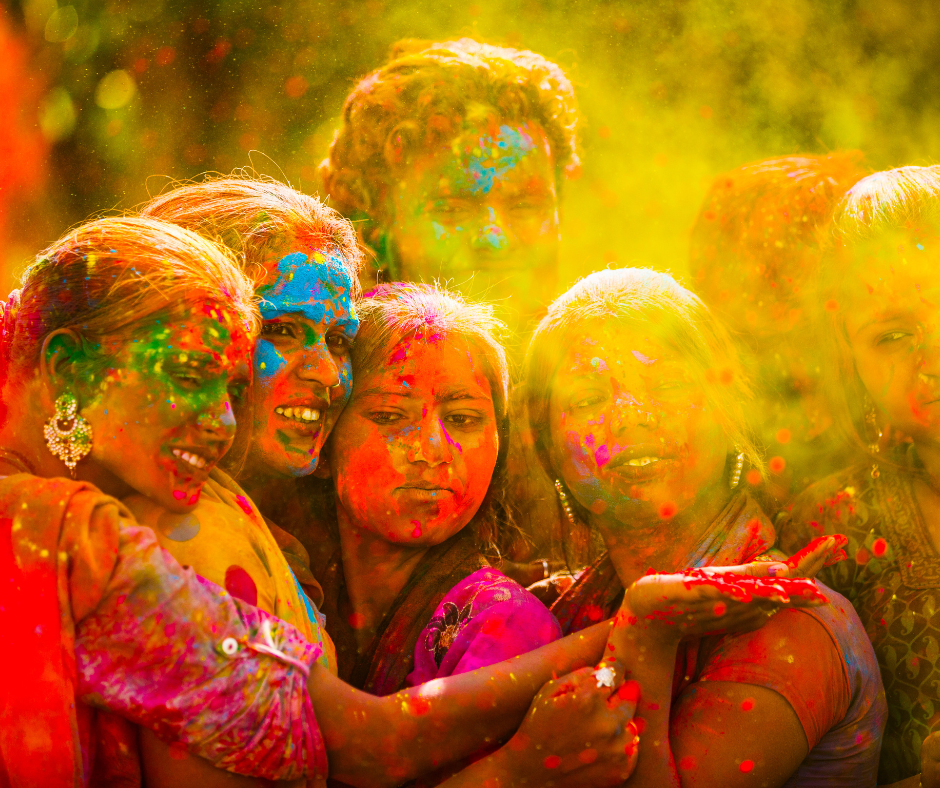
Several activities are typically part of Holi festivities:
Playing with Colours: The most iconic aspect of Holi involves people smearing each other with vibrant coloured powders, (this is also the number one activity people think of when picturing the festivals of India) known as “gulal” or “abeer.” This playful activity is the hallmark of the festival and is enjoyed by people of all ages.
Water Balloons: Water balloons filled with coloured water are thrown at friends and family, adding an extra layer of fun to the celebration. Water guns, buckets, and hoses are also used to drench participants.
Traditional Music and Dance: Folk songs, music, and lively dance performances are an integral part of Holi celebrations. Groups of people gather to sing and dance to traditional Holi songs called “Holi ke Geet.”
Bonfires: On the evening before Holi, known as Holika Dahan or Choti Holi, large bonfires are lit to symbolize the triumph of good over evil. People gather around the bonfires, sing songs, and perform rituals.
Sweets and Treats: Holi is incomplete without indulging in a variety of special sweets and snacks. Popular Holi treats include gujiya (sweet dumplings), thandai (a festive drink made with milk and spices), and a range of colourful sweets.
Visiting Friends and Family: Holi is a time for togetherness, and people often visit the homes of friends and family members to exchange greetings, play with colours, and enjoy festive meals.
Community Celebrations: Many neighbourhoods and communities organize larger-scale Holi celebrations, often in public spaces or parks, where people from different backgrounds come together to play Holi.
Holi Parties: In recent years, Holi parties and events have gained popularity, especially in urban areas. These gatherings often feature music, dance, and an abundance of colours.
Cultural Performances: In some regions, cultural programs and performances are organized, including folk dances, dramas, and other artistic expressions related to Holi.
Charitable Activities: Some individuals and organizations use Holi as an opportunity for charitable activities, such as distributing food and clothing to those in need. Charitable activities also often compliment other festivals of India.
Face Painting and Body Art: Elaborate face painting and body art designs are created with coloured powders, allowing people to express their creativity and artistic flair.

Jaisalmer Desert Festival
The Jaisalmer Desert Festival is one of our favorite festivals of India. It is an event held annually in the enchanting city of Jaisalmer, located in the heart of the Thar Desert in the Indian state of Rajasthan. Celebrated with great zeal and fervour, this three-day extravaganza typically takes place in February or March, showcasing the vibrant and timeless traditions of Rajasthan. The festival is a mesmerizing blend of folk music and dance performances, camel races and rides, turban-tying competitions, and traditional puppet shows. One of its most iconic features is the Mr. Desert contest, where participants showcase their distinctive moustaches and beards. The desert comes alive with a riot of colours, with locals dressed in traditional Rajasthani attire, and the Golden Fort of Jaisalmer serving as a breathtaking backdrop.
Here are some of the activities that are typically part of the Jaisalmer Desert Festival:
Camel Safari: One of the main attractions of the festival is camel safaris in the golden sands of the Thar Desert. Visitors can explore the desert on camelback, taking in the breathtaking desert landscape.
Camel Decorating: Camel owners spend months spoiling and fattening their camels for what we like to call the ‘camel beauty pageant.’ Camels are dressed in colourful pom poms and rugs and first place is highly coveted. The camel decorating in Jaisalmer makes this one of the most unique festivals of India.
Traditional Folk Music and Dance Performances: The festival features mesmerizing performances by local folk musicians and dancers. These performances showcase the vibrant music, colourful costumes, and energetic dances of Rajasthan.
Turban Tying Competitions: Rajasthan is known for its elaborate turbans, and visitors have the opportunity to watch or even participate in turban-tying competitions, learning about the significance of different styles and colours.
Mr. Desert Contest: This contest celebrates Rajasthan’s tradition of proud moustaches and beards. Participants compete for the title of “Mr. Desert,” showcasing their facial hair in various styles.
Puppet Shows: Traditional Rajasthani puppet shows are a delightful and entertaining part of the festival, often depicting folk tales and legends.
Art and Craft Displays: Local artisans showcase their talents by displaying and selling a wide range of handicrafts, including textiles, jewellery, pottery, and more.
Cultural Processions: Colourful processions with beautifully decorated camels, horses, and elephants wind through the streets of Jaisalmer, accompanied by music and dance performances.
Fireworks: Each evening, the festival sky comes alive with dazzling firework displays, adding to the festive atmosphere.
Camping and Stalls: Many visitors choose to camp in the desert during the festival. The desert camps offer traditional Rajasthani cuisine, live music, and cultural performances.
Rajasthani Cuisine: The festival is an excellent opportunity to savour authentic Rajasthani dishes, including dal baati churma, ker sangri, and a variety of sweets and snacks.
Hot Air Balloon Rides: Some festivals offer hot air balloon rides over the desert, providing a unique perspective of the festival and the desert landscape.
Yoga and Meditation Workshops: For those seeking a more serene experience, there are often yoga and meditation workshops in the tranquil desert setting.
Sangai Festival
The Sangai Festival, held in the northeastern state of Manipur is a celebration that pays homage to the endangered Sangai deer, which is found exclusively in the Keibul Lamjao National Park in Manipur. Typically held in November, this ten-day festival showcases the rich cultural tapestry of Manipur through a diverse array of activities. Visitors can immerse themselves in traditional Manipuri dance and music performances, explore the state’s exquisite handicrafts, and savour its culinary delights. The festival also features sports events, adventure activities, and showcases the natural beauty of Manipur, making this festival of India a unique blend of culture, nature, and adventure. The Sangai Festival serves as a platform for cultural exchange, promoting tourism, and fostering a deeper appreciation for the enchanting state of Manipur and its indigenous heritage.
Here are some typical activities and events that are part of the Sangai Festival:
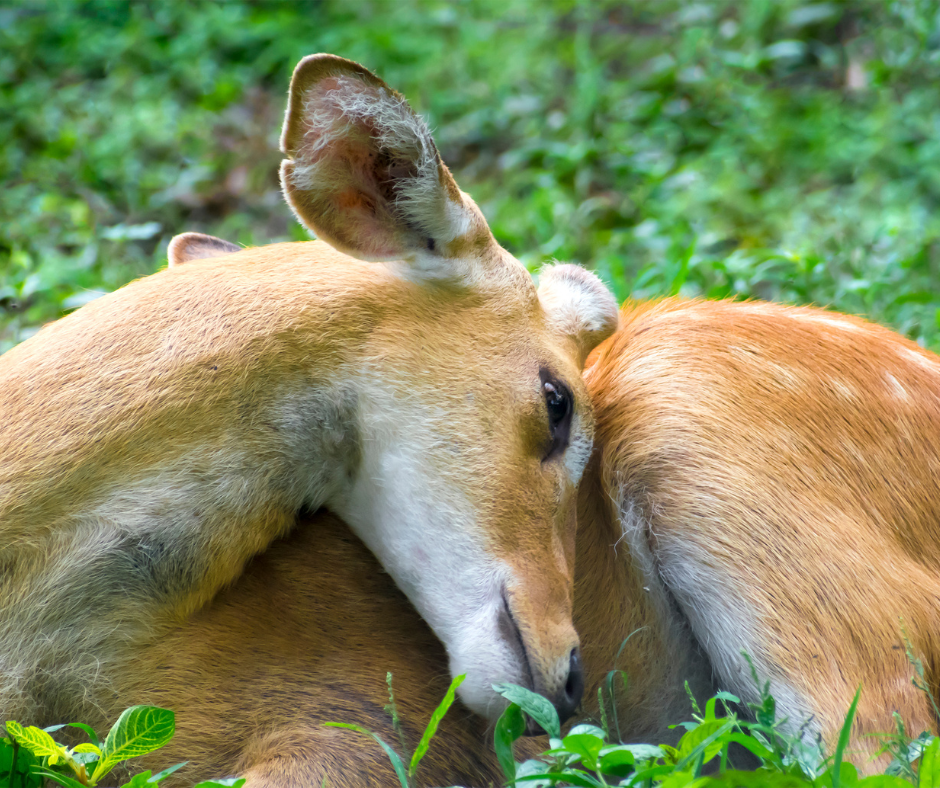
Cultural Performances: Traditional Manipuri dance forms like Manipuri classical dance, Ras Leela, Thang Ta (a martial art dance), and folk dances are showcased, along with live music performances.
Traditional Crafts Exhibition: Artisans from Manipur display and sell a variety of handcrafted items, including textiles, pottery, jewellery, and bamboo products, allowing visitors to appreciate the craftsmanship of the state.
Cuisine and Food Stalls: The festival features a wide array of Manipuri dishes and delicacies, providing an opportunity for visitors to savour the authentic flavours of Manipuri cuisine.
Handloom and Handicrafts Exhibition: Visitors can explore a wide range of handwoven textiles, handcrafted items, and indigenous artworks that represent Manipur’s rich artistic heritage.
Flower Shows: Given Manipur’s lush natural beauty, flower shows are an integral part of the festival, displaying the vibrant and diverse flora of the region.
Cultural Workshops: Workshops on traditional crafts, dance, music, and martial arts are conducted, allowing attendees to engage in hands-on learning experiences.
Sports and Adventure Activities: The festival often includes sporting events such as traditional Manipuri sports, trekking, rock climbing, and other adventure activities that highlight the state’s natural landscapes.
Boat Races: On the picturesque Loktak Lake, traditional boat races and other water sports are organized, offering a unique sporting spectacle.
Fashion Shows: Fashion shows featuring Manipuri attire and designs provide a platform to showcase the region’s unique fashion culture.
Competitions and Contests: Various competitions, including photography contests, painting competitions, and traditional sports competitions, are held to engage and entertain attendees.
Cultural Exhibitions: Exhibitions that depict the history, culture, and traditions of Manipur are organized, allowing visitors to gain insights into the state’s heritage.

Gangaur Festival
The Gangaur Festival is a traditional and vibrant celebration observed primarily in the northwestern Indian state of Rajasthan. This colourful festival is dedicated to Goddess Gauri, an incarnation of Goddess Parvati, and is celebrated by married and unmarried women with great enthusiasm. The festival typically spans 18 days in the Hindu month of Chaitra, usually falling in March or April. During Gangaur, women dress in their finest traditional attire, adorn their hands with intricate henna designs, and create beautiful clay idols of the goddess. These idols are then carried in grand processions through the streets of cities and towns, accompanied by singing, dancing, and the playing of traditional instruments. The festival is a celebration of marital bliss, fertility, and the hope for a prosperous and harmonious married life. It also provides a captivating glimpse into Rajasthan’s rich culture, as it combines devotion, artistry, and community engagement making this one of the most vibrant festivals of India.
During this festival, several activities and traditions are typically part of the festivities:
Idol Making: Women and artists create beautiful clay idols of Goddess Gauri (an incarnation of Goddess Parvati). These idols are elaborately decorated and serve as the focal point of the festival.
Traditional Dress: Women dress in their finest traditional attire, often wearing vibrant and colourful Rajasthani outfits. They also adorn themselves with jewellery and apply intricate henna designs (mehndi) on their hands.
Processions: Elaborate processions featuring the beautifully adorned idols of Goddess Gauri are carried through the streets. These processions are accompanied by singing, dancing, and traditional music, creating a lively and festive atmosphere.
Folk Dances: Folk dancers, often performing traditional Rajasthani dances like Ghoomar and Kalbelia, entertain the crowds during the processions and other events.
Traditional Music: Musicians play traditional instruments like dholak, manjeera, and shehnai, adding to the festive ambiance with their melodious tunes.
Community Involvement: The Gangaur Festival is a time when communities come together to celebrate. Local residents and businesses often sponsor the processions and provide refreshments to participants and onlookers.
Rituals and Prayers: Women offer prayers and perform rituals dedicated to Goddess Gauri for the well-being and prosperity of their husbands and families. Married women fast during the festival, often breaking their fast at night after offering prayers.
Cultural Performances: Cultural programs and events are organized, showcasing various art forms, including traditional music, dance, and drama.
Food and Sweets: Special dishes and sweets are prepared during the festival, including traditional Rajasthani cuisine like dal baati churma, ghevar, and various snacks and desserts.
Craft Exhibitions: Craftsmen and artisans display and sell their handcrafted items, providing an opportunity for visitors to appreciate and purchase Rajasthani handicrafts.
Competitions: Various competitions and contests, such as rangoli-making and traditional dress competitions, are held to engage participants and promote cultural activities.
If you’ve enjoyed reading about the festivals of India, why not take a look at this article on the festivals of Bhutan?
You could also check out this handy festival calendar so you can see what other great festivals of India you could visit on your trip.



Leave a Reply